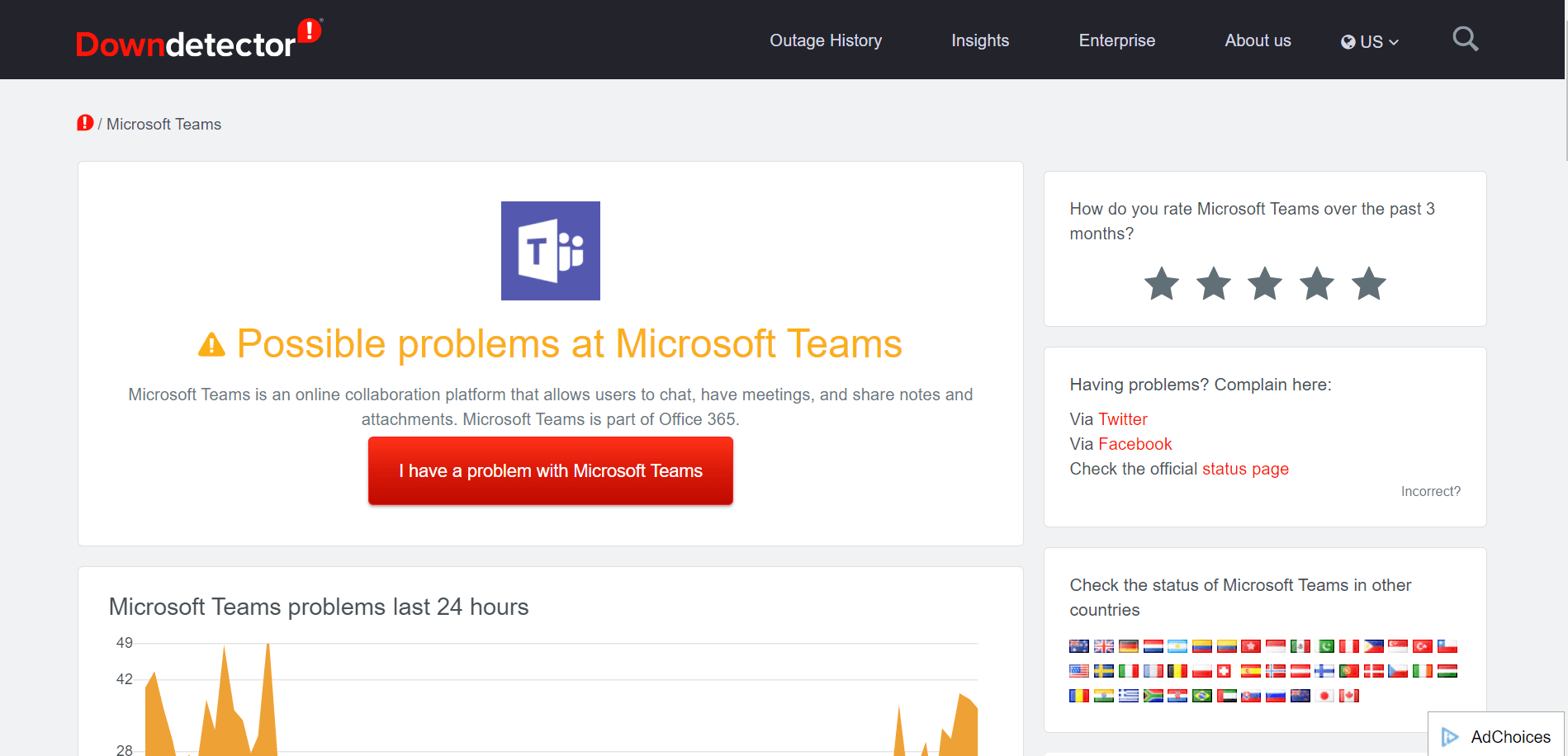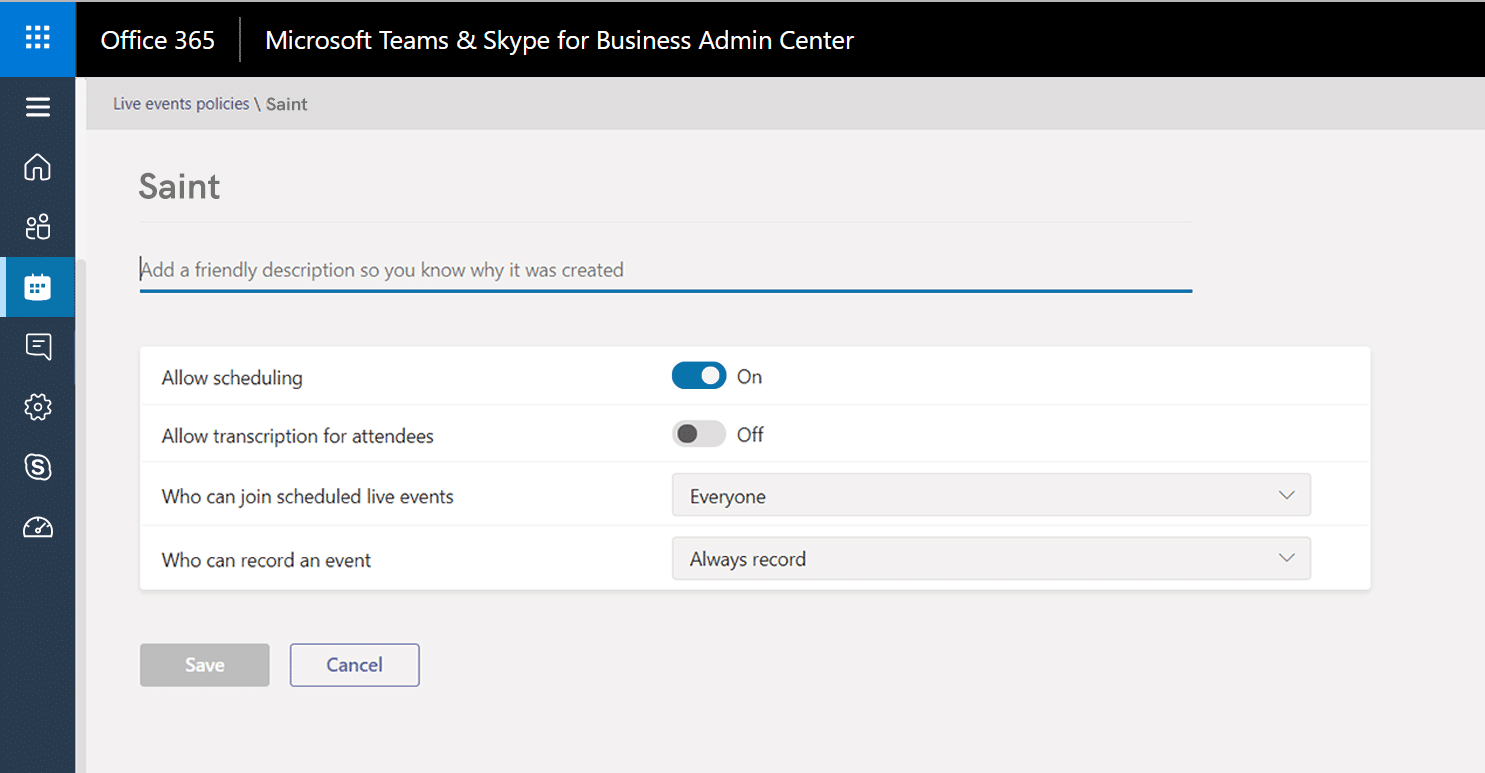Trying to fix Live Events missing or not working in Microsoft Teams?
Microsoft Teams has a lot of great productivity features. Additionally, the Microsoft program is used by a lot of schools and big organisations. Although the application does cater to smaller and casual businesses as well, there’s a feature that’s appealing to large brands.
Whenever you’re in a meeting with 10 or more people, the connectivity between each member can be really taxing on your internet. Furthermore, the server managing that channel will be working overtime to connect each person with more than 10 people, for every member.

This is why ‘Live Events’ is a useful feature that Microsoft Teams offers. ‘Live Events’ allows company heads to broadcast a meeting instead of having it in a group call. This way, the connection is only between the member and the live broadcast. This saves a ton of internet bandwidth and removes a lot of complications in dealing with large group chats.
In addition to that, you’ll still be able to interact with your members since the broadcast is streamed live. However, a bug that annoys a lot of users is when Live Events stop working or are missing. Here’s how you can fix Live Events missing or not working in Microsoft Teams.
Let’s get started!
- 1. Check Microsoft Teams’ Servers.
- 2. Make Sure Live Events is Enabled.
- 3. Give Your Group Members Live Events Permissions.
- 4. Assign The Live Event To Your Members.
- 5. Log Out and Into Your Account.
1. Check Microsoft Teams’ Servers.
Before you start fiddling around with your settings and preferences, let’s check for Microsoft Teams’ server status. This is a very underrated step that can save you a whole lot of time. By checking for server problems, you’ll be able to discern if the server is the cause of the problem here.
This will save you a lot of trouble and effort from changing your settings and scouring through the internet for solutions. You can check for the server’s status by going through their social media accounts. A popular one for Microsoft Teams is their official Twitter page.
However, the problem with relying on the companies for updates is that these companies prioritize their reputation first. If Microsoft Teams suffers from occasional and regular server problems, chances are Microsoft wouldn’t publish that problem on Twitter unless a lot of users complain.

For methods like this, we prefer checking for server problems through Downdetector, a community-driven website. Unlike Microsoft, users will not hesitate to complain or report issues with the server. Complaints made at Downdetector are numerically displayed at every hour.
You can correlate your problem with the number of complaints and check if other users are experiencing this problem as well. Downdetector also offers a ton of other websites, so we do recommend using the platform before troubleshooting for problems on your end.
2. Make Sure Live Events is Enabled.
The Live Events feature not working can be an admin or user-side problem. We’ll be going over different methods for both user-types through this article. For now, here’s what you can do if you’re the admin of the server.
Checking your settings and configuration can go a long way. Make sure that Live Events is enabled for both your server and all your employees.
Here’s how you can make sure that ‘Live Events’ is enabled.
- First, open up the admin center on the Microsoft website. Enter your credentials and log in to proceed to the next step.
- On the Microsoft Teams admin center, locate and click on Meetings from the left panel of your screen.
- A drop-down menu should expand with a bunch of options. For this method, just click on Live event policies.

- Finally, from the list of features displayed on your screen, look for Attendee visibility mode. Click on the text box at the right to configure and change the setting to Everyone.
All your employees and members in this group chat should now be able to access the Live Event that you’re setting up.
3. Give Your Group Members Live Events Permissions.
When you use Microsoft Teams for big companies, you’ll find that the permissions necessary to create Live Events are usually limited to admin-level users. This is a great way to avoid problematic members that can potentially create a ton of disruptive and informal Live Events.
However, by default, all users are given the necessary permissions to create and enter Live Events. Yet despite that, due to a bug, it’s not uncommon for Live Events to be disabled for all users except admins when you first make a group.
In this method, we’ll be reconfiguring your group settings to give your members the ability to use Live Events.
Here’s how you can give your group members Live Events permissions:
- Go to the admin website of Microsoft and log in to your admin account.
- Now, navigate to Meetings and look for Live event policies. You should see a list of policies on your screen, by default a “Global” policy should be present.
- For this method, go ahead and add a Live Event policy by clicking on the Add button.

- Give it any name you want, but go through the necessary options to finish creating the policy. Important steps to note is to enable Allow Scheduling and to allow Everyone in the organization to join Scheduled live events.
- Once you’re satisfied with the settings, just click on Save and you’re done!
With that out of the way, all your members should now be able to enter and create Live Events in the Microsoft Teams app.
4. Assign The Live Event To Your Members.
Whenever you configure or customize a Live Event policy, you’ll subsequently have to assign this to the respective users. If certain members in your company cannot access the Live Event, you may have to assign it to them individually. You can do this for one user or for a multitude of employees (we will go over both steps below).
Assigning the Live Event can be a useful feature to have, in case you want to broadcast a meeting to select members of the company. This is helpful for secret projects, employee board interviews, and so on.
Here’s how you can assign the Live Event to one user.
- Similar to the method above, you will need to open up the admin-side website of Microsoft Teams.
- Once you’re in the Microsoft Teams admin center, click on Users. You’ll find this on the left side of your screen.

- Now, beside Assigned policies, click on Edit.
- Finally, configure the Live Events policy that you want to assign to your member. Once you’re done, just click on the Save button to finish.
Alternatively, here’s how you can assign the Live Event viewer to a lot of users:
- While you’re still in the Microsoft Teams admin center, click on Meetings and go to Live Events Policies.
- After selecting the policy you want to configure, click on Manage Users. A list of users that you can add to the policy will be displayed on your screen. Simply click on the Add option to add these users to the policy.
- Once you’ve added all the users you want, click on the Save button to finish.
5. Log Out and Into Your Account.
For regular members of the company, you might not see the immediate effects of the policy changes at first. To address this issue, we recommend that you log out and back into your account to reset your connection in Microsoft Teams’ servers.
Doing so should refresh all the permissions in your account, granting you access to the Live Events feature.
Here’s how you can log out and into your account:
- First, open up the Microsoft Teams app and navigate to the profile icon on the top-right corner of your screen.

- Next, scroll or move your mouse down all the way to the bottom and click on Sign out.
- Once you’ve been logged out of your account, sign back in by entering your credentials.
Your connection to your account should now be completely reset and refreshed. Try checking out the Live Events feature if you can access it. If that didn’t work, you could try updating Microsoft Teams as a last resort. You can also reinstall it if you’re at the edge of all hope.
Now that you’ve reached the end of this article, hopefully we’ve helped you fix Live Events missing or not working in Microsoft Teams. If you have any questions regarding the article, feel free to leave us a message or a comment down below.
If this guide helped you, please share it. 🙂







